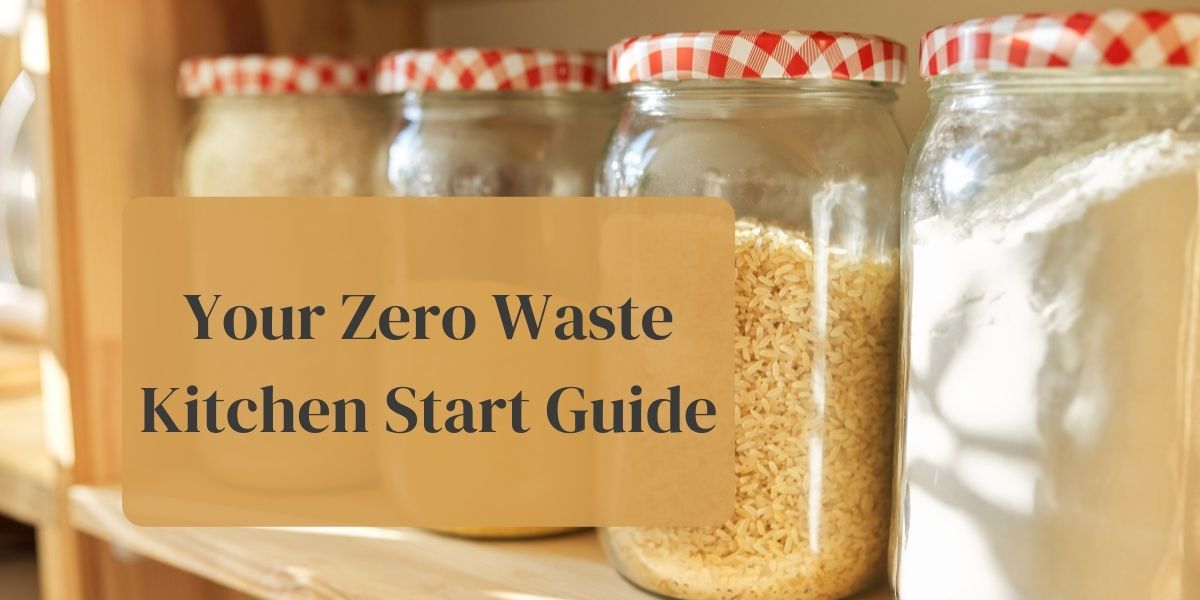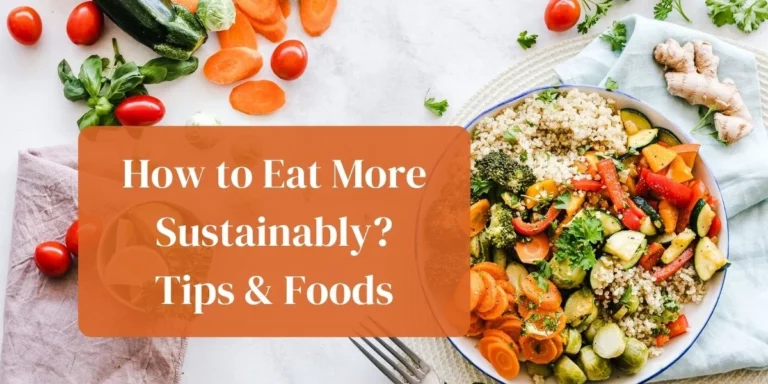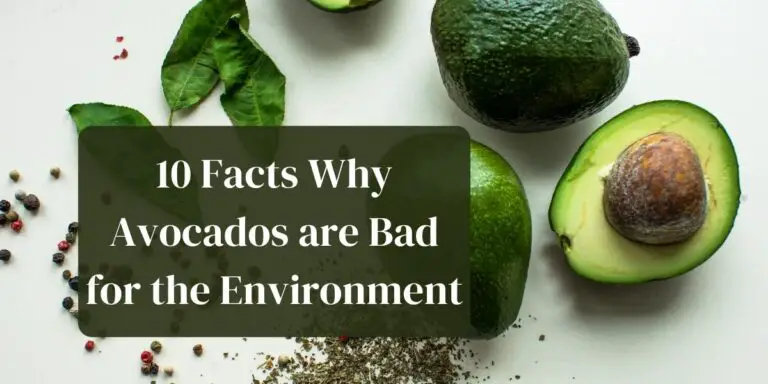Do you want to make your kitchen more eco-friendly? This Zero Waste Kitchen Start Guide walks you through five simple steps to making your kitchen less wasteful.
Do you consider yourself a green eater? Choosing sustainably produced foods and eating with the seasons is one essential approach to go green, but eating a nutritious diet for you and the earth is only one aspect of living a greener lifestyle.
Reducing trash is an important element of living more sustainably. On average, each American contributes 4.4 pounds (2 kg) of rubbish to landfills each day, with the kitchen accounting for the majority of this waste. Fortunately, by adopting simple greener living practices and switching your kitchen to eco-friendly items, you can drastically minimize kitchen waste.
That’s why I’m thrilled to announce a new collaboration with Green Universe and Earth Hero, a sustainable online marketplace for transparent eco-friendly home items. All of Earth Hero’s products are created using low-impact materials, and all of the items in their stores have been meticulously studied to include sustainability symbols that indicate if the item is organic, recycled, upcycled, low-impact, or responsible. You won’t have to question if things are “greenwashed,” because Earth Hero’s products are sustainably created and meet your zero-waste kitchen goals.
With a few easy lifestyle changes and the move to Earth Hero eco-friendly goods, you, too, can decrease kitchen waste and become a zero waste fighter. Are you eager to learn how? Continue reading or click the links below to get started on the five simple steps to a zero-waste kitchen.
Table of Contents
- Step 1: Plan your meals and eat from home
- Step 2: Buy in bulk and make your own
- Step 3: Swap single-use products for long-term solutions
- Step 4: Adopt a minimalist kitchen motto
- Step 5: Smart waste management
Step 1: Plan your meals and eat from home
Are you the type of shopper who goes to the grocery store hungry and without a plan? I understand; this was how we shopped for many years, loading our cart with whatever looked delicious and deciding what to eat from our shopping haul each night before dinnertime.
However, I’ve discovered that creating a meal plan is the first step in switching to a zero waste kitchen (and stick to it). Eating without a plan is a recipe for increased kitchen waste since you will certainly purchase too much food and wind up throwing away random things that you did not want to eat.
Make meal planning a weekly routine: one of the most essential strategies to become a more sustainable eater is to make meal planning a weekly habit. Set aside 20 minutes each week before going grocery shopping to plan your meals for the full week to save time and money.
Eat seasonally and locally wherever possible: arranging your meals around seasonal foods is not only more ecological, but it also means less packaging for frozen or preserved items when shopping fresh and in season. To decrease waste and lower your carbon footprint, eat a diet high in whole, plant-based meals.
Only buy what you need: Having a meal plan means you’ll only buy what you need for the following week, eliminating food waste and freeing up kitchen space.
Dine as much as possible at home: meal planning means you’ll eat out less frequently, eliminating takeout containers for dinners brought in (and save money on eating out).
Brew coffee at home a habit: instead of stopping at a coffee shop in the morning, make your coffee at home to decrease the usage of single-use cups… and you’ll save money! Invest in reusable coffee cups and coffee filters to decrease the usage of single-use paper filters.
Drink from the faucet: Instead of buying bottled water, drink from the faucet to decrease packaging waste (don’t forget your reusable water bottle made from recycled materials!). Invest in a water filter, which is less expensive in the long run (for your pocketbook and the health of the planet) than buying bottles.
Step 2: Buy in bulk and make your own
The second stage in moving to a zero waste kitchen is determining which staples and dry items may be purchased in bulk and which foods and products can be made at home. Many of your favorite kitchen essentials, such as pasta, rice, and even cleaning goods, may be purchased in bulk to save packing, and many items that you buy at the supermarket can be produced at home for much less money (and healthier).
When feasible, buy in bulk: one of the most effective methods to decrease packaging waste and save money in the kitchen is to make the bulk section your closest friend. Dry items like as pasta, beans, lentils, rice, spices, flours, tea, coffee, and even cleaning supplies can be purchased in bulk at Whole Foods or other natural grocers.
Make your own sauces, dressings, dips, and other simple foods: how many dressings and sauces bottles do you recycle each week? If you’re anything like us, you’ve probably got a lot. I’ve recently started creating all of my own dressings, sauces, and dips, which means I’m spending less money at the supermarket (plus my own recipes are healthier!).
Cleaning goods are not only expensive, but many times the “green” versions are the same product packaged differently and overcharged, which is ultimately unneeded when you can manufacture your own at home. To save time and money, look into DIY house cleaning products for easy, natural cleaning options, and buy reusable cleaning bottles to decrease packaging.
Purchase smart kitchen storage: When purchasing bulk products, you will most likely need to stock up on smart storage items such as reusable bags, storage containers, and glass jars. (Or you remove labels from food jars and wine bottles to reuse for food storage).
If you buy more products in bulk, any grocery shop with a bulk department will enable you to bring your jars and containers to weigh before filling. This means less packaging waste and fewer trips to the store (every time I can minimize grocery trips, I’m pleased!)
Instead of buying drinking water in plastic bottles, you can fill bottles with purified water (RO water) in local stores. Read this article to find a self-service RO water dispensary near you.
Step 3: Swap single-use products for long-term solutions
After you’ve simplified your meal plan and begun to shop in bulk, it’s time to consider eliminating additional single-use kitchen goods. Fortunately, there are several simple substitutions that might help you decrease kitchen waste.
Reusable beeswax instead of plastic wrap or aluminum foil: Are you a plastic wrap and aluminum foil junkie in the kitchen? Fortunately, there are some easy alternatives to the terrible waste of single-use wraps, such as investing in recyclable storage containers and utilizing reusable beeswax wrap, which may be used for months before composting.
Switch to reusable straws: If you haven’t already jumped on the reusable straw bandwagon, do so by stocking up on glass or metal straws that can be used again and again.
Paper towels: one of the most significant changes I’ve made in the last year is to replace paper towels with reusable kitchen towels. Yes, paper towels may be composted, but the aim is to reduce single-use towels in favor of reusable cleaning rags. Not only is it healthier for the environment, but paper towels are quite costly, and we’ve already saved over $100 this year.
Swap out your sponges: Sponge, squeegees, and plastic brushes aren’t strictly single-use items, but they do need to be replaced regularly. Instead, invest in biodegradable dishwashing equipment or reusable kitchen rags (you don’t need a sponge, I swear).
Step 4: Adopt a minimalist kitchen motto
When it comes to fashionable kitchen gadgets, being a gourmand and striving to live a greener lifestyle can often be competing aims. Every year, it seems, there is a new sophisticated cookery gadget that takes social media by storm.
Rather of jumping on the next fad to hit the market, adopt a minimalist kitchen attitude by:
Buying just what you need and will use: do you have a Vitamix, a food processor, a portable immersion blender, and a bullet blender? While each of these devices is useful in its own right, consider if they are all truly necessary given that they all effectively accomplish the same thing: mix food. You may discover that one or two will suffice, allowing you to save money and valuable kitchen storage space.
Invest in quality items that will last a long time: If you do decide to buy a gadget, I always recommend completing your homework on the brand (are they devoted to ecologically friendly kitchen practices?) and spending money on quality products that will last for years. When the Instant Pot first came out, I was very opposed to it, but after doing some study, I learned that I could prepare many handmade household staples much faster with this amazing equipment. I am willing to invest money if it saves me time and allows me to prepare more things at home rather than buying them at the shop.
Don’t get rid of everything for the sake of “minimalism”: While being a minimalist is beneficial for minimizing kitchen waste, don’t toss things away merely for being a minimalist. Donate your old kitchen equipment to people in need, and be mindful of what you toss away. Don’t buy and replace perfectly good kitchen gadgets with “greener” items; this simply adds to the trash. It takes time to transition to an eco-friendly kitchen; replace outdated goods with more sustainable alternatives only when absolutely necessary.
“Transitioning to an eco-friendly kitchen takes time.”
Step 5: Smart waste management
While having a zero waste kitchen is #goals, most of us may not be able to live totally trash-free. That is why it is critical to understand where your garbage is going when it leaves your house so that you can make your kitchen as low-impact as possible.
Compost as much as possible: After ensuring that you have as little food scraps as possible (by following to a meal plan and only purchasing what you need! ), establish a practice of composting food scraps and other biodegradable kitchen goods (such as composting tea bags!).
Reuse: Instead of tossing out those condiment jars and containers, preserve what you can for use around the house. Use this garbage to make lunch containers, spice jars, or basic organizing tools.
Recycle where possible: instead of sending recyclable items to the landfill, recycle what cannot be composted or repurposed.
Purchase a smaller trash can: While we are strong supporters of composting, reusing, and recycling in the kitchen, it is unavoidable that some waste will end up in a landfill (which we are working hard to decrease every day). One thing that has been beneficial to us is having a smaller trash can, which forces us to reconsider where our waste goes before putting it out.
I hope you find my Zero Waste Kitchen Start Guide helpful and inspiring as you make the move to a more environmentally friendly, less wasteful home.







